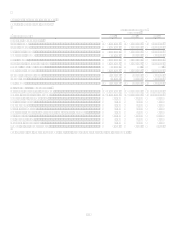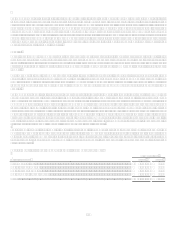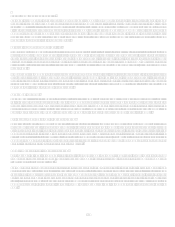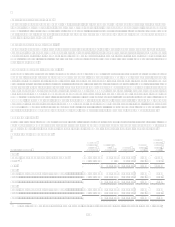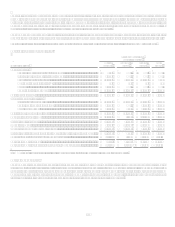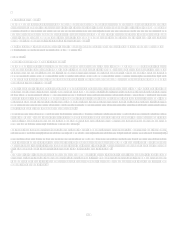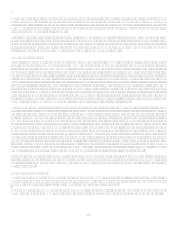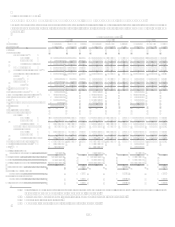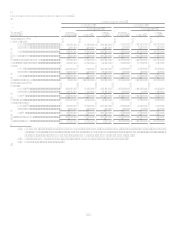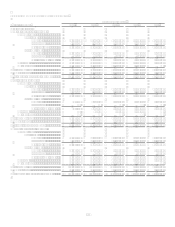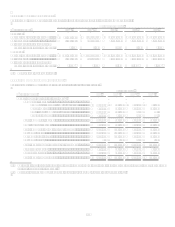Capital One 2008 Annual Report Download - page 86
Download and view the complete annual report
Please find page 86 of the 2008 Capital One annual report below. You can navigate through the pages in the report by either clicking on the pages listed below, or by using the keyword search tool below to find specific information within the annual report. 68
Covenants
In connection with the issuance of certain of its trust preferred capital securities, the Company has entered into a Replacement Capital
Covenant (RCC) granting certain rights to the holders of covered debt, as defined in the RCC, that prohibit the repayment,
redemption or purchase of the trust preferred capital securities except, with limited exceptions, to the extent that the Company has
received specified amounts of proceeds from the sale of certain qualifying securities. Currently, the Companys covered debt is its
5.35% Subordinated Notes due May1, 2014. For more information regarding this covenant, reference is made to the RCC entered into
by the Corporation in connection with the issuances of such trust preferred capital securities, which are filed with the U.S. Securities
and Exchange Commission under cover of Forms 8-K. The Company will provide a copy of the RCC to holders of the covered debt
upon request made to Investor Relations.
The terms of the lease and credit facility agreements related to certain other borrowings and operating leases in Table 12 require
several financial covenants (including performance measures and equity ratios) to be met. If these covenants are not met, there may be
an acceleration of the payment due dates noted above. As of December 31, 2008, the Company was not in default of any such
covenants.
Equity
The Company may also access the equity markets from time to time to raise additional liquidity. During 2008 the Company issued
approximately 15.5 million common shares in a secondary offering, raising $760.8 million in 2008.
The Company, as noted above, issued 3,555,199 preferred shares to the U.S. Treasury under the CPP, raising $3.55 billion in 2008.
IX. Market Risk Management
Interest Rate Risk
The management of interest rate risk, or the risk that earnings will be diminished by changes in interest rates, is fundamental for
banking institutions. Like other banks, the Company borrows money from other institutions and depositors, which it uses to make
loans to customers and to invest in debt securities and other earning assets. The Company earns interest on these loans and assets and
pays interest on the money it borrows from institutions and depositors. If the rate of interest it pays on its borrowings and deposits
increases more than the rate of interest it earns on its assets, the Companys net interest income, and therefore its earnings, will be
diminished. The Companys earnings could also be negatively impacted if the interest rates it charges on its earning assets fall more
quickly than the rates it pays on its borrowings and deposits. Changes in interest rates and competitor responses to those changes may
affect the rate of customer payments or pre-payments for mortgages and auto and installment loans and commercial loans and may
affect the balances customers carry on their credit cards. These changes can reduce the overall yield on its earning asset portfolio.
Changes in interest rates and competitor responses to these changes may also impact customer decisions to maintain balances in the
deposit accounts they have with the Company. These changes may require the Company to replace withdrawn balances with higher
cost alternative sources of funding.
In addition to the impact to current earnings, interest rate risk also refers to changes in the net present value of assets and off-balance
sheet positions less liabilities (termed economic value of equity) due to interest rate changes. Economic value of equity could be
affected to the extent that the market value of the Companys assets, liabilities and off-balance sheet positions do not respond equally
to changes in interest rates.
The Companys measurement of interest rate risk considers both earnings and market value exposures. The consolidated balance sheet
and all off-balance sheet positions are included in the analysis. The analysis reflects known balances and contractual maturities when
available. Balance sheet positions lacking contractual maturities and those with a likelihood of maturity prior to their contractual term
are assumed to mature consistent with business line expectations or, when available in the case of marketable securities, market
expectations. As of December 31, 2008, the Companys Asset/Liability Management Policy limited the change in projected 12-month
earnings due to a gradual +/-200 basis points change in interest rates over the course of nine months to less than 5% of base net
interest income. The measurement of impact to current earnings includes the change in net interest income and the change in the
valuation of mortgage servicing rights driven by the change in interest rates. Given the absolute low level of interest rates that
prevailed as of December 31, 2008 and the inability for market rates to fall below 0%, the declining rate scenario reflects a gradual 50
basis point rate decline versus the customary 200 basis point scenario. As of December 31, 2008 the Company estimated a 0.4%
increase in 12-month net interest income for a gradual 200 basis point rate increase and a 0.2% reduction in 12-month net interest
income for a gradual 50 basis point rate decline.
In addition to limits related to possible changes in 12-month net interest income, as of December 31, 2008 the Asset/Liability
Management Policy limited the pre-tax change in economic value of equity due to instantaneous parallel rate shocks of 200 basis
points to less than 12%. As of December 31, 2008, the estimated reduction in economic value of equity due to an adverse 200 basis
point rate shock was 4.3%.


